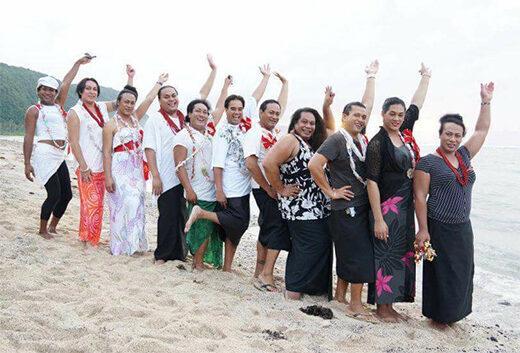By Staff Writer
Researchers at Lethbridge University in Canada has selected Samoa as a case study in the competition between women and fa’afafine for men.
The study is based on what the researchers found that sexual competition isn’t always against only your own gender.
The findings are published in a paper for a peer-reviewed open access scientific journal published by the Public Library of Science.
The paper, Intersexual Mate Competition in Three Cultures, is written by lead author Scott Semenyna, a PhD student in Paul Vasey’s Laboratory of Comparative Sexology, who examines when women engage in sexual competition for a man with female rivals, as well as with male rivals.
“Sexual competition typically occurs among members of the same sex,” says Semenyna. “Women compete with other women, and men compete with men to attract the most appealing opposite-sex partners. Same-sex attracted individuals also exist, such as gay men, making it possible that women and gay men might engage in sexual and romantic competition.”
These interactions are reported to be relatively rare in western cultures such as Canada, where only 15 per cent of women have reported to have competed with gay men over the same object of desire. The same cannot be said for two other cultures Vasey’s group studied, Samoa and the Istmo Zapotec of southern Mexico. In both cultures, feminine, same-sex attracted males regularly adopt gender identities outside the man or woman binary. These individuals are known as fa’afafine in Samoa, and muxe in the Istmo Zapotec.
Vasey’s research group found that 43 per cent of Samoan women reported having competed against a fa’afafine for the sexual attention of a man, while an even larger number of Istmo Zapotec women, 85 per cent, reported having competed against a muxe.
“We know these cultures have these non-binary genders that engage in this type of competition,” says Semenyna. “I think the biggest surprise was in the Istmo where a quarter of the women had no response to the muxe flirting with their husbands or their boyfriends, mostly because they thought their partners would not be interested in that. When I read the narratives though, I saw a certain level of naivetŽ because, in reality, lots of men were interested.”
The tactics these unfamiliar rivals use to try and poach and/or keep mates aren’t unfamiliar at all and have been used since the beginning of time. The fa’afafine and muxr frequently use flirtatious and sexual alluring tactics to try and entice men away from their female partners, whereas the women engage in guarding and emotionally punitive behaviours with their partners.
“Part of our findings are an acknowledgment that individuals who are same-sex attracted are not removed from broad mating interactions, they are actually embedded right in it,” says Semenyna. “It’s not like they are on the sidelines, they can be active participants. There are more studies in my dissertation that revolve around this area. One is women’s response to infidelity, including infidelity that might occur with a female versus infidelity that would occur with a male.”
While this behaviour is not as common in western cultures, its framework can be applied here and is something Semenyna may look at for a future study.
“In a western frame, it’s much more likely taking place between a heterosexual man and a bisexual woman, or even a lesbian woman, just because female bisexual behaviour, identity and attraction seem to be quite a bit more common in western culture,” he says.
Semenyna is also looking ahead to his post-doctoral studies, which will be conducted in Vasey’s lab, and examining competition between bisexual women and men for the same women.
“The work is important because it demonstrates that reproductive and non-reproductive sex develop and evolve in concert, and each can influence the other,” says Vasey. “Consequently, our research on inter-sexual mate competition can help furnish transformative new insights into sexual selection, as well as the processes that underpin mating systems.”
Semenyna will be the first post-doctoral fellow at the University of Lethbridge to obtain post-doctoral funding from the Social Sciences and Humanities Research Council.
